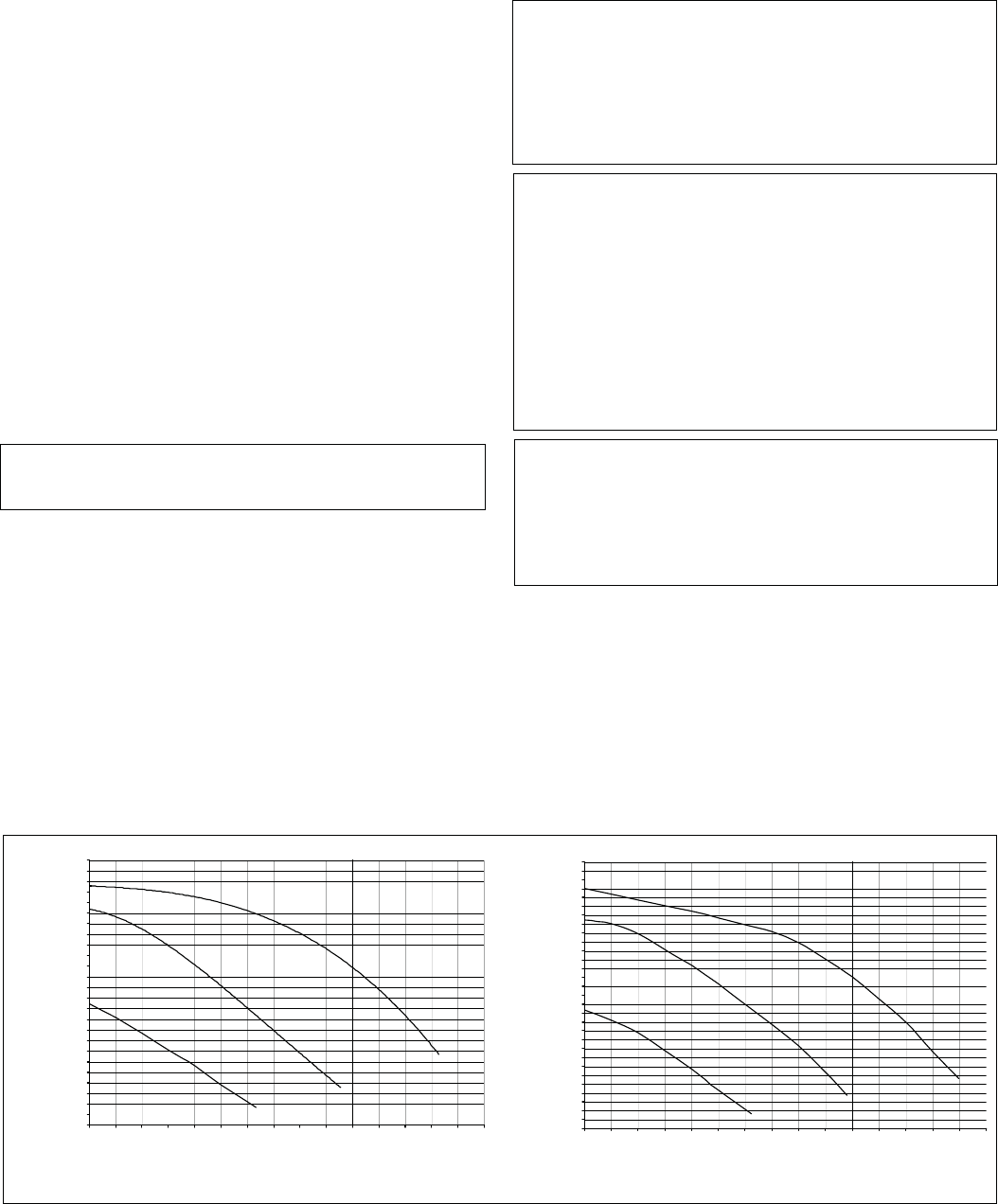
18
required system volume and capacity, no valve is to be placed
between the boiler and the expansion tank.
6. Install an Air Elimination Device on the system supply if
required, the boiler has two auto air vents built in.
7. Install a drain valve at the lowest point of the system.
Note: The XPak has a proper internal drain valve. (see Fig.
42a)
8. The Safety Relief Valve is installed at the factory. Pipe the
discharge of the safety relief valve to prevent injury in the
event of pressure relief. Pipe the discharge to a maximum of
6” (152 mm) above the floor to a drain. Provide piping that is
the same size as the safety relief valve outlet. Never block the
outlet of a safety relief valve.
11. FILL AND PURGE HEATING SYSTEM
CAUTION:
For installation that incorporates standing Iron
Radiation and systems with manual vents at the high points.
Follow above section and starting with the nearest manual air
vent, open vent until water flows out, then close vent. Repeat
procedure, working your way toward furthest air vent. It may
be necessary to install a basket strainer in an older system
where larger amounts of sediment may be present. Annual
cleaning of the strainer may be necessary.
WARNING:
Use only inhibited propylene glycol solutions
which are specially formulated for hydronic systems. Ethylene
glycol is toxic and can attack gaskets and seals used in
hydronic systems. Glycol mixtures should not exceed 40%.
1.Glycol in hydronic applications which is specially formulated
for this purpose includes inhibitors that prevent the glycol
from attacking metallic system components. Make certain
that the system fluid is checked for the correct glycol
concentration and inhibitor level.
2.The glycol solution should be tested at least once a year and
as recommended by the glycol manufacturer.
3.Anti-freeze solutions expand more than water. Allowances
must be made for this expansion in the system design.
CAUTION: It is highly recommended that you carefully follow
the glycol manufacturer’s recommended concentrations,
expansion requirements and maintenance recommendations
(pH additive breakdown, inhibitor reduction, etc.). You must
carefully calculate the additional friction loss in the system as
well as the reduction in heat transfer co-efficients; pH must be
maintained between 6-8.
8. BOILER WITH DHW TANK
- Connect the external hot-water tank according to the Installation
instructions of the hot-water tank and fittings concerned.
Domestic Hot Water Production via DHW Storage Tank
XPak boilers can be used in conjunction with the stand-alone
DHW storage tanks.
The boiler can control the DHW tank temperature directly from
the boiler control panel. In case a tank sensor is installed (see
boiler configuration jumpers Fig. 61) adjust the tank temperature
via the DHW selector. The display shows the tank temperature if
main selector in proper position.
Boiler can accept also a DHW tank controlled by a thermostat
(see boiler configuration jumpers Fig. 61), in this case the DHW
set point can not be adjusted on the control panel but only on the
tank thermostat (field supplied).
Both cases the supplied water temperature to the tank is 176°F
(80°C) and it goes ahead with priority over heating until the tank
request is satisfied (either the sensor or the termostat open).
The boiler can control a 3-way valve directly from the boiler control
panel (see 3-way installations Fig. 38).
Refer to electrical connections for 3-way valve installation.
Size and select the DHW storage tank based on the forecast
DHW consumption of the building in question.
If different method of DHW production are used, the boiler flow
temperature is set as heating mode (see boiler configuration
jumpers Fig. 61).
9. WATERSIDE FLOW (PRIMARY CIRCUIT)
The boiler is designed only for closed loop, forced circulation hot
water heating systems.
XPak is equipped with an internal 3 speed pump.
PUMP DUTY
Fig. 6 below shows the flow-rate available – after allowing for
pressure loss through the appliance – for system requirements.
When using this graph, apply only the pressure loss of the system.
The graph is based on a 36°F (20°C) temperature differential.
CAUTION: The XPak should not be operated as a potable
Hot Water Boiler. The XPak should not be operated in a open
system.
10. PROCEDURE SUMMARY
1. Connect the system return marked “In”.
2. Connect the system supply marked “Out”.
3. Install a Back Flow preventor on the Cold Feed Make-Up
Water line.
4. Install a Pressure Reducing Valve if required on the Cold
Feed Make-Up Water line, 15 PSI (1 bar) nominal on the
system return. Check Pressure Gauge which should read
minimum pressure of 12 PSI (0.8 bar)
5. Install an Expansion Tank on the system supply. Consult the
tank manufacturer’s instruction for specific information relating
to expansion tank installation. Size the expansion tank for the
Fig. 6
XPak 85
XPak 120
Flow rate (gph)
Residual head (ftwc)
Residual head (ftwc)
Flow rate (gph)
1st speed
2nd speed
3rd speed
0 20 41 61 81 102 122 142 163 183 203 224 244 264 285 305
16
15
14
12
11
10
9
7
6
5
3
2
0.6
0
0 20 41 61 81 102 122 142 163 183 203 224 244 264 285 305
16
15
14
12
11
10
9
7
6
5
3
2
0.6
0
1st speed
2nd speed
3rd speed


















